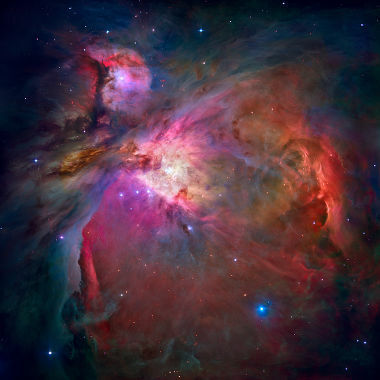We can only see the objects that surround us because they are emitting or reflecting light, which, upon reaching our eyes, provides clear image formation. Light takes a certain amount of time to be perceived and provide the images we see. Like yours velocity is extremely high, the distance between us and the various bodies around us is negligible.
Even though light has such a speed that it allows it to travel between Earth and Moon in approximately 1 s, when we look at some celestial bodies, we realize that the reception time of the light emanating from them can take millions or even billions of years to cross all of space and reach we.
Light-year
Light-year is a unit of distance used in Astronomy and represents the distance traveled by light during a period of time corresponding to one year. Knowing that the speed of light is 3.0 x 105 km/s and that a year has 31,536,000 s, we can determine the value in kilometers of a light year. Look:
1 light year = 3.0 x 105 km/s. 31,536,000 ≈ 9.5 x 10 12 km
1 light year ≈ 10 trillion kilometers
If an object is at a distance of 5,000 light-years from Earth, it means that the time taken by light to leave that particular object and become observable is 5,000 years. Images of this supposed celestial body, when viewed from Earth, would not represent its current state, but would reveal its shape 5,000 years ago. For this reason, we can say that to look at the sky is to see the past of the universe.
The image below refers to the Orion nebula, which contains the constellation of the same name. The distance between Earth and this nebula is approximately 1500 light-years, that is, the light we see today left the nebula 1500 years ago, approximately during the period of fall of the Roman Empire.

Distances of celestial bodies
The following images bring in their description the name of the celestial bodies and the distance in light-year from the Earth.

Andromeda galaxy: 2.5 million light years, closest galaxy to Earth

Sirius Star: 8 light years, brightest star in the night sky

Pillars of Creation - 7,000 light years

Omega Nebula - 5,000 light years
By Joab Silas
Graduated in Physics
Source: Brazil School - https://brasilescola.uol.com.br/fisica/olhar-para-ceu-ver-passado.htm

